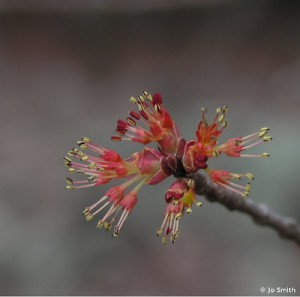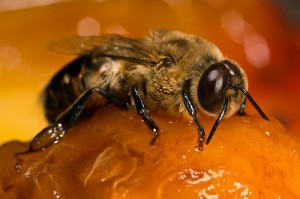First Full Inspections of the Year
With the weather being what it is, I had decided to start my full inspections in the middle of February (instead of early March, per usual.) A full inspection means that I open the hive and pull every frame. What’s the big deal? There are two big reasons why doing this in February (in a normal Winter) is a risk. One involves the cluster. I will break whatever cluster they have, by pulling every frame. In a normal Winter, this might set them back severely. They are unlikely to be able to form the cluster quickly again and, assuming we hit a week where the highs were in the low 40’s, a bunch of baking brood would likely die as the colony would not be able to keep them warm enough. But the second reason why this is typically ill advised is much more important. Whenever you do a full inspection, you are necessarily pulling the frame with the queen on it. This means you may kill her by accident. Normally, in mid-February (in my experience), no drones are about. This means that a new queen cannot be mated. Therefore, killing your queen in mid-February is normally a death sentence for the hive. Thus, only the foolish or those with a high risk tolerance (they don’t mind losing a hive or two if it furthers their knowledge of honey bees) will break a hive up this time of year.
So, why would I go into 10 hives today (well, 6 hives and 4 overwintered nucs)? The weather has simply been very unusual for Richmond, Virginia beekeepers this year. Based on my calculations (which, as ludicrous as it may sound, are based on a hybrid Maple’s blooming date this year, vs previous years), I thought that Drones might be walking on the comb as of today (and I mean exactly today!) So, I took the risk. I figured that I would be unlikely to kill any of the queens, but worse case could only be one dead queen. I was willing to take the risk.
I started out going through a full hive. I found capped drone brood (= drone walking on the comb by March 1 for sure). Stores were great, population was great and brood pattern was at a 10 (I ran into several 8’s that day and one 5, but this one was a 10 – Grade A Queen and definite Nuc parent.) I then hit my 4 Nuc’s. All looked good except for 1, which was literally slam out of food. They had a small brood nest (but the pattern was a 9) and no food. This was the swarm that I found in one of my deeps in the shed last Fall. You can’t expect a Fall Nuc to build up much, but these guys were completely out (I had a Nov swarm that had more). This got them a 2 on the Winter Stores scale. We’ll see how they score out by March. But, the bottom line is that they will live to March because of my inspection today. When I found them without any honey, I dropped a fully frame of capped honey from the hive that I started the series with. That will get them by for 2 or 3 weeks (based on their population), when I’ll check ’em again.
At this point, with the exception of the one nearly starved Nuc, I had found Drone cells (capped) in the one hive and all Nucs. Opening the last Nuc, I figured to find the same. Wait? What was that? A Drone just starting to make his way out of the cell!! In truth, only his eyes were visible. Being the lazy male that he is, the workers have to cut him out of his cell. So, there he was, smiling at me. This means drones will be walking on the comb in a day or two!!!
Why do I care about walking drones? This is the number one flag for Nuc makers. If a Drone is walking on the comb, you know with near absolute certainty that Drones will be flying to Drone Congregation Areas in 14 days. You also know that it takes a Queen 16 days (give or take a day) to hatch and another week (at least) before she heads out to be mated. So, if you see walking Drones, you can start a Nuc on that very day and feel comfortable that Drones will be out to mate with your virgin queen when she is ready! So, walking drones are critical for Nuc makers and Queen rearers.
So, seeing one trying to poke out was encouraging. But, I was not that excited, as I had expected to see one walking…wait..what was that?! A big, fat beggar drone making his way among the workers looking for food! And this was just a Nuc! Ha! Drones are out in central Virginia! Booyah! (Man, I love this time of year.)
For me, I like to wait a week or so after the first Walking Drone so that I get more drones out there for my queens. I have no idea if it makes a difference or not (I will experiment one of these years, but not this year.) So, my target date for the first round of Nucs (March 3 to 5) is holding steady!
All in all, the inspections went well. I didn’t get deep into several of the larger hives, as it started to get a bit late. If you go into a hive and break her apart , they need some time to get back together even in this kind of weather. I don’t like to break them up inside of 2 hours before sunset when the temps are going down into the 40’s or lower that night. Regardless, all hives are alive and (with the exception of the one Nuc) with more then enough stores to make them to the holly bloom. Dandilions are blooming now (although I do not see my bees working them.)
We’ll see what March has in store, but I’m going on record saying that this will forever after be known as the Year of the Swarm. It is very clear to me, based on full hives and nucs, that the bees are ramping up very strong right now. I am confident saying that swarms will happen the first week of March around Richmond, Virginia. I’d bet big money on it.


